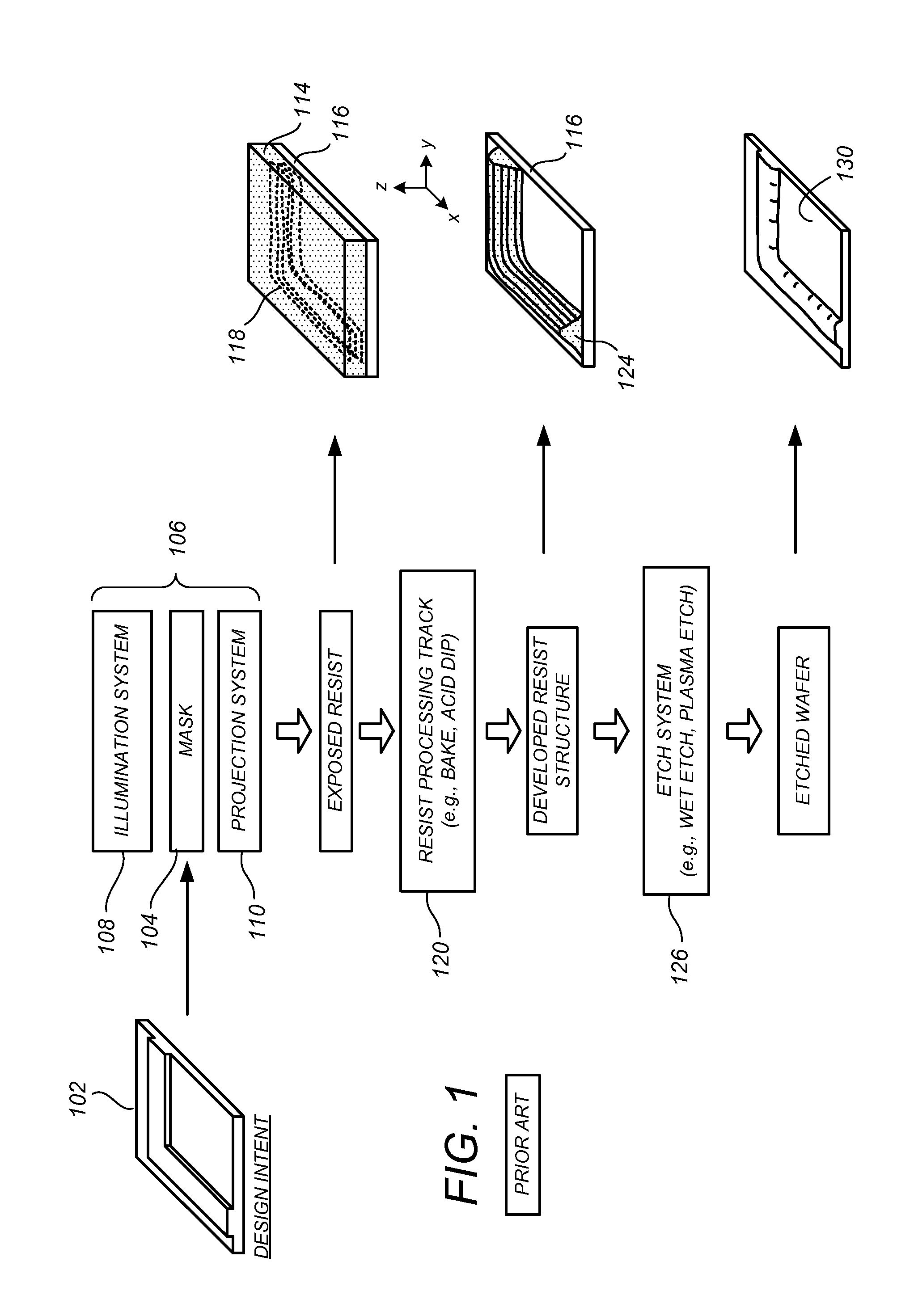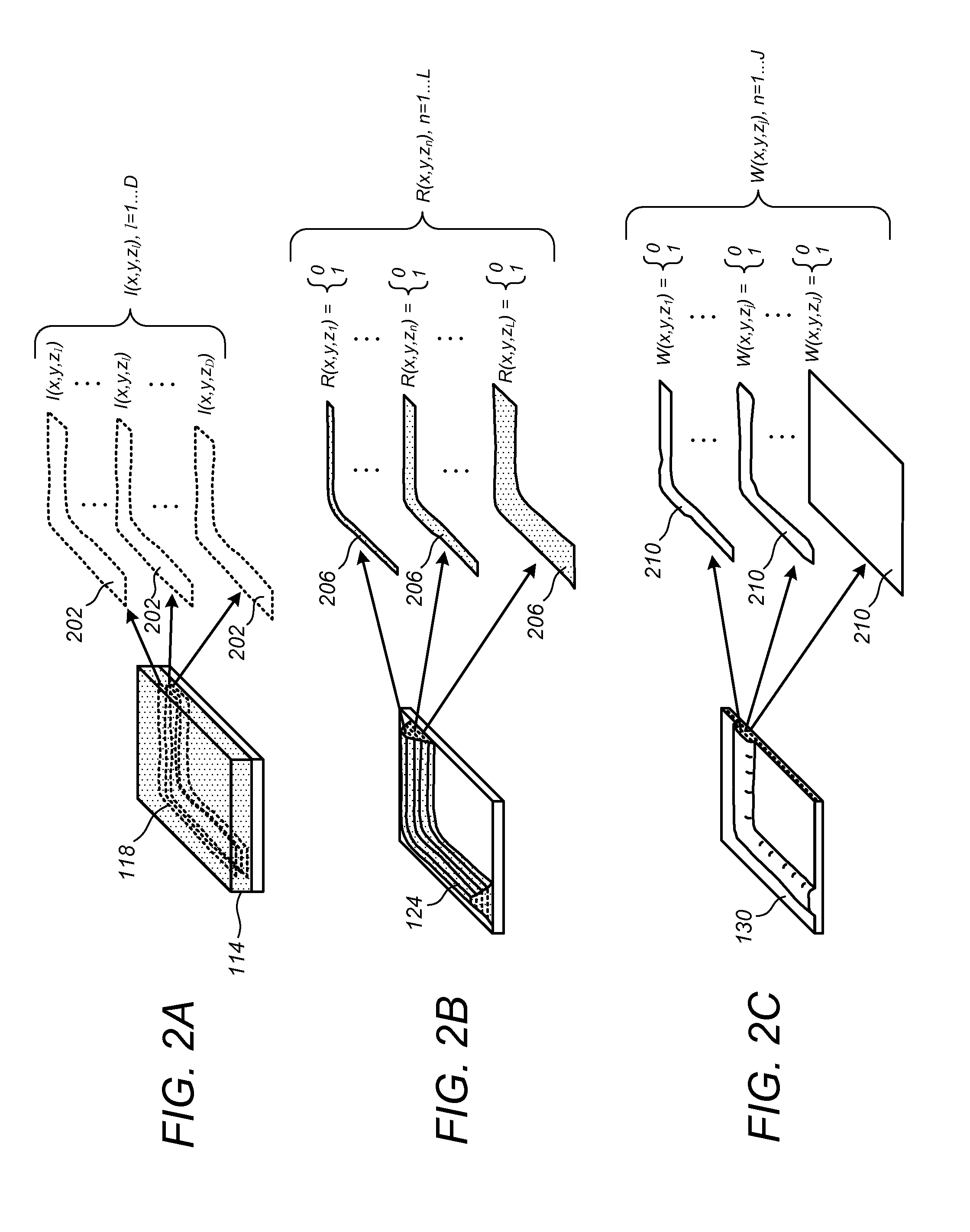Computer simulation of photolithographic processing
a photolithographic processing and computer simulation technology, applied in the field of computer simulation of photolithographic processing, can solve the problems of affecting the effect of mask optimization, and increasing the difficulty of adjusting the mask, so as to achieve sufficient fast simulation, increase the ease of mask optimization, and speed up the computation time
- Summary
- Abstract
- Description
- Claims
- Application Information
AI Technical Summary
Benefits of technology
Problems solved by technology
Method used
Image
Examples
Embodiment Construction
[0043]FIG. 3 illustrates simulating a resist processing system according to a preferred embodiment, which is described herein in conjunction with FIG. 4 that illustrates a resist processing system simulation model according to a preferred embodiment. Referring first to FIG. 4, the resist processing system simulation model comprises a first portion 402 which comprises operations falling into the Wiener class and which is referenced hereinafter as Wiener operator 402. The model further comprises a second portion 422 which comprises at least one operation (here, a thresholding operation) that does not fall into the Wiener class and which is referenced hereinafter as non-Wiener operator 422. A discussion of operations inside and outside the Wiener class can be found in Schetzen, M., “Nonlinear System Modeling Based on the Wiener Theory,” Proceedings of the IEEE, Vol. 69, No. 12 (1981), which is incorporated by reference herein.
[0044]Wiener operator 402 comprises a convolution operator 4...
PUM
 Login to View More
Login to View More Abstract
Description
Claims
Application Information
 Login to View More
Login to View More - R&D
- Intellectual Property
- Life Sciences
- Materials
- Tech Scout
- Unparalleled Data Quality
- Higher Quality Content
- 60% Fewer Hallucinations
Browse by: Latest US Patents, China's latest patents, Technical Efficacy Thesaurus, Application Domain, Technology Topic, Popular Technical Reports.
© 2025 PatSnap. All rights reserved.Legal|Privacy policy|Modern Slavery Act Transparency Statement|Sitemap|About US| Contact US: help@patsnap.com



